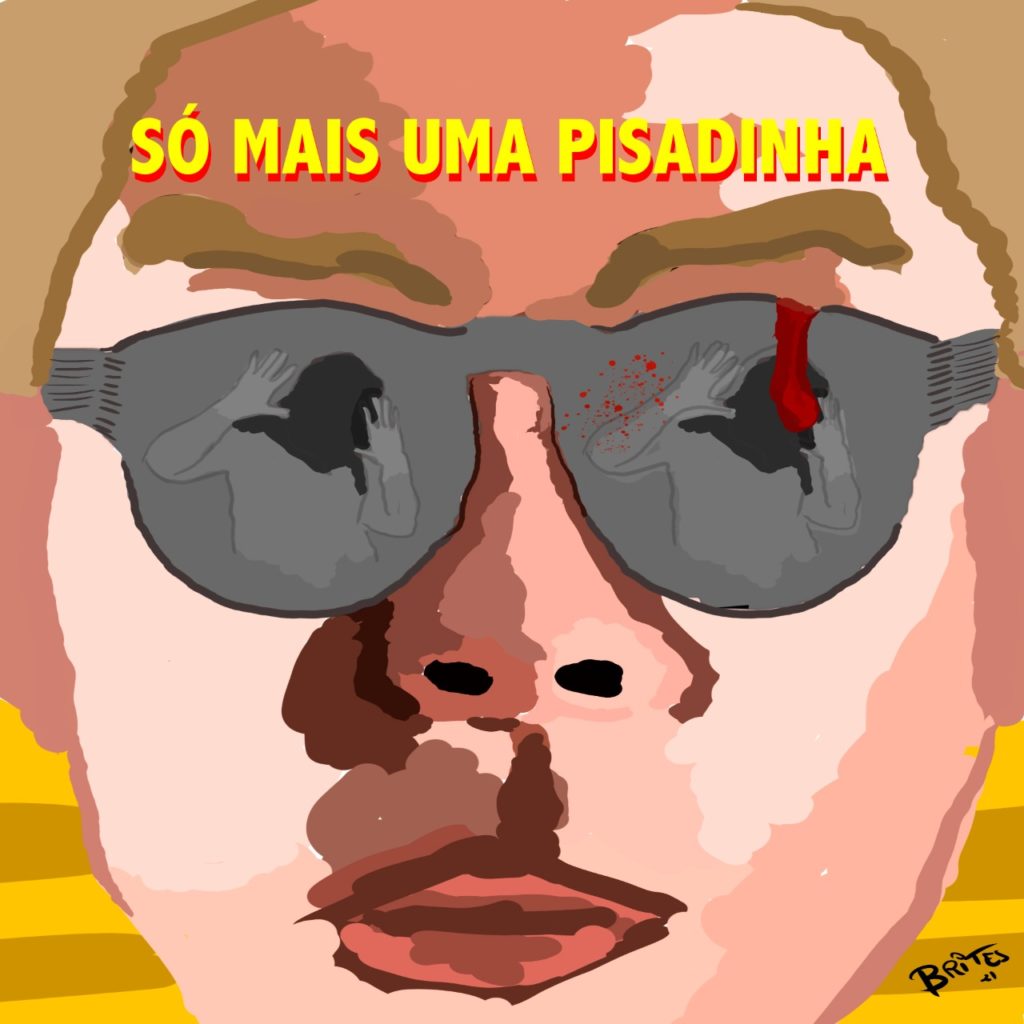
Food deserts
Leitura: 6 minFirst things first: as many of you know, I am a type 2 diabetic. I discovered it in 2018, and from what I’ve researched, I probably spent 13 years with the disease advancing, in silence. When it manifested out of nowhere, on January 7, 2018, my glucose reached 585.
Since then, I have taken care of my health. Previously, living in a favela and suburb of Rio de Janeiro, I had no basic attention, information, or means of knowing myself sick. I am a result of the system. A system that throws people to God’s will in areas where the State does not prioritize access to health, food, and quality of life. If you live in Jardim Botânico you have everything in your hands. If you are from Madureira, you better get by, my friend.
In a city – and in a country – with this such a huge contrast, we are all vulnerable to the system. The number of working hours, the mobility and time we spend in commuting, the hours we sleep, the opportunities to work out, the quality of our food changes from place to place, and from MONEY TO MONEY. The Inequality Map of 2020 reveals that a person living in Jardins, a noble region of São Paulo, lives 23 years longer than a person living in Jardim Ângela, a suburban area.
In other words, Brazil does have a project of abandonment, which results in death and extermination. The more moderate ones would say that a governor doesn’t wake up and say: “Today I’m gonna kill a thousand black and poor people”. By not doing anything about the problems, though, the ruler ALLOWS death as an outcome, which accumulates, so it is as if he woke up to kill. As long as the priority is not to eradicate poverty, the State is murderous, and only those who have money are able to save themselves because dignity in Brazil gets monetized. Quality education is monetized, health, culture, everything.
What is a food desert?
Food deserts are areas where access to fresh or lightly processed foods is scarce or unavailable, forcing people to move to other locations to find these items that are essential to a healthy diet.
(alimentandopoliticas.org) (it seems to me that this site is no longer up and running, but this concept is still recorded as having been authored by them on Google)
If you want evidence-based studies, check out the Mapping of Food Deserts in Brazil, released by the Ministry of Health, which explains where there are more offerings of fresh, minimally processed, processed, and ultra-processed foods. In large capitals, for example, it is usual to find fewer open fairs and zero offers of organic products in large peripheral regions, while there are large fast-food chains and markets for the sale of ultra-processed products.
In Bangu
Where I lived, for example in Vila Aliança, a favela adjacent to Vila Kennedy.
There is Guanabara, SuperMarket, Inter, Assaí and other smaller chains, offering essentially big brands and many processed foods. There are 18 supermarkets in Bangu, and only one street market.
This reveals the existence of a food desert: a high offer of products with high levels of pesticides, ultra-processed and hyper-caloric products, meat with excessive hormones, cookies, bread, sausages, sugars, fats. Add to this army, the presence of fast-food restaurants, the big chains like McDonald’s, Burger King, Bob’s, Giraffe’s and all the street food, pizza restaurants, and the whole universe of food delivered by Ifood (mobile app to order food).
There are no offers of organic products.
In Brooklyn, New York, except for the dollar price, there are smaller supermarket chains that look like those we have in Brazil. Big brands, ultra-processed products. Target, Bravo, CTown and an infinity of Delis, small markets, with fruits and vegetables produced in the Midwest, overloaded with agro toxics, and meats from all over the world, including Brazil, with the same logic of excessive hormones. And the further into Brooklyn, the more access to Cheetos, the less access to watermelon. Fast food is a universe. Wendy’s, McDonald’s, Burger King, 7Eleven, hamburgers a-plenty, pizzas, deep-fried, sweets, ice cream. A playground of fun powered by sugar and oil, to endure the sickening pace of NY. Sick? Yes, for tourists it is great, but for those who live in the suburbs, it is heavy. And I haven’t mentioned Queens, Bronx and Harlem.
Lisbon, Zurich, Köln
Portugal, Switzerland, and Germany. I have visited three cities, in three different countries, and I live in one of them, but there is something in common: Europe. I knew the food reality in Rio’s and in São Paulo’s peripheries, and I could observe common elements in New York, and these realities are far from what happens in Europe. First of all, Europe is small. The population density is the highest in the West. Secondly, for historical reasons, the territory has a large distribution of food and internal production of vegetables and fruits, and what they don’t produce, they import. The peripheries do exist, although smaller than in the Americas, and the inequality factor matters. Fewer working hours, shorter distances to work, better wages, access to organic food in larger supply, products with fewer pesticides, local meat with fewer hormones, vegetable and insect protein. Hold on, it’s not a paradise. But the culture of eating more naturally is there, and yes, it is possible to eat well because of all these issues, since the European Union invests and subsidizes local producers. There is a food program, a project.
The supply of ultra-processed foods is equally present. If you want these foods, you will find them, just like in Capão Redondo. But you can find organic products in any supermarket. You can find farmers markets in practically every neighborhood.
So this explains food supremacy, which I see as the opposite of a food desert.
The other day I was looking at a tall, white guy and his wife and kids. All white. Tall, thin. They were Northern Europeans. Germans, Swiss. Filling their asses with whole wheat bread, jam and fruit, in a café in Lisbon. I thought: just looking at it makes me fat. But not those bastards. This is due to the fact that they have been eating THE SAME THINGS for decades.
There is socio-economic stability and access to health and information. So they eat the same things, which allows you to say that they follow a diet. This doesn’t happen in Bangu, or in Jardim Ângela. It’s one day at a time, eating what they have. If there is egg one day, they eat it, if there is sausage the next day, they eat it, if it is rotten sausage, they eat it, if it is noodles, pizza with fake cream cheese rim, cheddar on everything, fucking bacon, and Coke. It’s a frenzy that only has a break for a pack of Twist or a pack of Onion Snacks. Because these snacks, called Fofura in Brazil, they are not sold as a package, you gonna find bags of them! Luggage!
And the market compels you to eat NEW THINGS. New this, new that, microwave lasagna that costs a shit and you have no idea what it’s made of. More and more fast food, cheap and high calories. Lots of IFood on your cell phone, lots of snacks and guarana on the way to work.
Before you know it, it has been years since you sucked an orange. You haven’t eaten a banana. You haven’t bought a pumpkin to make with meat from a neighborhood butcher. You don’t have a farmers’ market. There is no meat market anymore. We eat en masse. Going to Walmart, buying what they put there for us to eat, the feed for the new cattle.
And experiences like those of the MST are criminalized. Or of the producers and farmers of Parelheiros, in the extreme south of São Paulo. Who eats organic food is a jerk from Vila Madalena, or a mystical witch from Leblon, a noble neighborhood where some woke people live. Both from the PSOL (woke left party). And the poor are still in the desert. Getting sick, dying early, ingesting calories to stay alive. More than half of the Brazilian population is overweight. These people that post lifestyle photos, these people are living the privilege. All white men and white women, laughing at your face. And making a lot of money.
The deserts exist, they are in Rio, São Paulo and New York, killing essentially black, Latino, immigrant people. The racial struggle is also about fighting for quality food in the mouths of racialized people.










